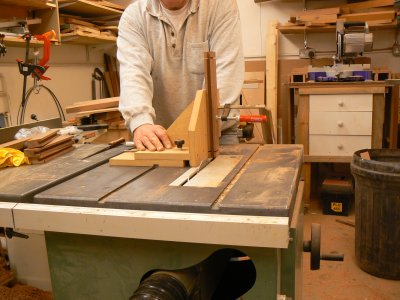dave261266
Established Member
Hi Guys,
Just a request for a best practice fix.
I am making some cabinet doors for my utility room and one of the tenons is slightly too small for the mortise. Normally I wouldn't worry and I would pack the mortice out but the design of the door shows me the top of the tenon. The gap won't be huge (maybe 1-2 mm) but as it's visible I want to make sure that it looks neat. I would guess that it's fairly straight forward and I have a couple of ideas on how to resolve it but I thought I would ask and get experts views.
Many thanks
Dave
Just a request for a best practice fix.
I am making some cabinet doors for my utility room and one of the tenons is slightly too small for the mortise. Normally I wouldn't worry and I would pack the mortice out but the design of the door shows me the top of the tenon. The gap won't be huge (maybe 1-2 mm) but as it's visible I want to make sure that it looks neat. I would guess that it's fairly straight forward and I have a couple of ideas on how to resolve it but I thought I would ask and get experts views.
Many thanks
Dave





